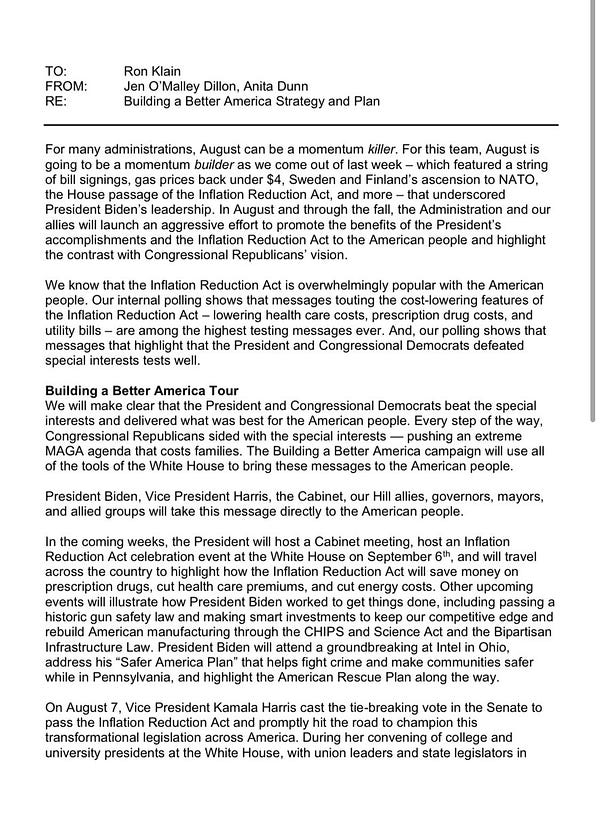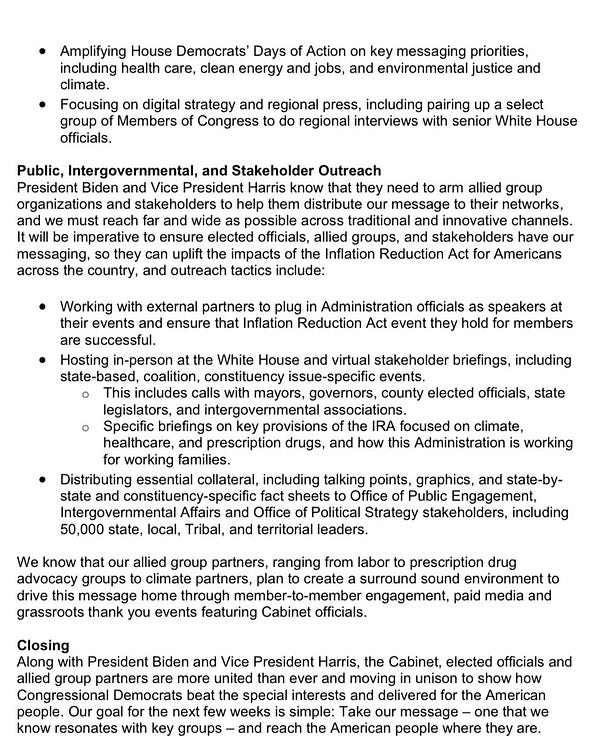Yesterday’s elections suggest that American voters are concerned about the past year’s radicalization of the Republican Party. In a special election for a seat in the House of Representatives in a New York state swing district, the 19th congressional district, Democrat Pat Ryan beat his Republican opponent. Pundits looked at the race as a bellwether (named for the wether, or castrated sheep, fitted with a bell to indicate where the flock was going), and most thought the Republican would win, as he was a strong candidate and the midterm election in a president’s first term usually goes to the opposite party.
Ryan’s opponent emphasized inflation and crime, but Ryan told Greg Sargent of the Washington Post: “We centered the concept of freedom…. When rights and freedoms are being taken away from people,” Ryan told Sargent, they “stand up and fight.” The Supreme Court’s Dobbs v. Jackson Women’s Health decision of two months ago overturning the 1973 Roe v. Wade decision that protected abortion rights was a key sign of the erosion of freedom. Ryan told Sargent that “ripping away reproductive rights from tens of millions of people” was “visceral.”
So, too, are gun safety and threats to democracy. “There’s sort of this power grab of the far, far right,” Ryan told Sargent. “It’s just wildly out of step with where the vast majority of Americans are.”
This is the fourth special election since the Dobbs decision that has shown at least a two-point movement toward the Democrats. A referendum on preserving abortion rights in Kansas also went to those in favor of them.
Tom Bonier, who runs the political data firm TargetSmart, noted that women have outregistered men to vote since the Dobbs decision by large margins: 11 points in Ohio, for example. And a Pew poll released yesterday shows that 56% of voters say that the right to abortion is very important to them for their midterm votes, up from 46% before the Dobbs decision.
The trend is clear, but so is the reality that a number of states are operating under extreme Republican gerrymanders—some, like those in Alabama, Georgia, Louisiana, and Ohio, still in force although the state judges have said they are illegal—that will give Republicans a structural advantage.
Biden administration officials are currently touring the country to call attention to how the administration is “Building a Better America.” In 35 trips to 23 states, they will “make clear that the President and Congressional Democrats beat the special interests and delivered what was best for the American people.” They are emphasizing the bipartisan infrastructure bill, the CHIPS and Science Act, the Inflation Reduction Act, the gun safety law, and so on. They are urging Americans to unite not by party, but against the extremism on display in the leadership of the current Republican Party. “Every step of the way, Congressional Republicans sided with the special interests—pushing an extreme MAGA agenda that costs families.”
Since the 1980s, Republicans have argued for cutting public programs because they cost too much money, while also arguing that tax cuts for the wealthy would pay for themselves by expanding the economy, thus increasing tax revenues. It has never worked—when government computers showed that President Ronald Reagan’s first tax cut would explode the deficit, the budget director simply reprogrammed them—but that has not stopped the Republicans from passing repeated tax cuts for the wealthy, one as recently as December 2017.
Republicans have warned that the massive investment the Democrats have made in the country during Biden’s term would rack up enormous deficits. But, in fact, today the Office of Management and Budget forecast that this year’s budget deficit will decline by $1.7 trillion, the single largest drop in the deficit in U.S. history. (The record deficit was $3.13 trillion in 2020, during the worst of the coronavirus pandemic.) This number is simply a benchmark, and the deficit remains at $1.03 trillion, but it suggests that numbers are currently moving downward.
Today, Biden announced another key change in American policy, this time in education. The Department of Education will cancel up to $20,000 of student debt for Pell Grant recipients with loans held by the federal government and up to $10,000 for other borrowers. Pell Grants are targeted at low-income students. Individuals who make less than $125,000 a year or couples who make less than $250,000 a year are eligible. The current pause on federal student loan repayment will be extended once more, through the end of 2022, and the Education Department will try to negotiate a cap on repayments of 5% of a borrower’s discretionary income, down from the current 10%.
The Department of Education estimates that almost 90% of the relief in the measure will go to those earning less than $75,000 a year, and about 43 million borrowers will benefit from the plan.
Opponents of the plan worry that it will be inflationary and that it will not address the skyrocketing cost of four-year colleges. But its supporters worry that the education debt crisis locks people into poverty. They also note that there was very little objection to the forgiveness of 10.2 million Paycheck Protection Program (PPP) loans issued as of July 2022, with $72,500 being the average dollar amount forgiven.
The administration’s plan is a significant pushback to what has happened to education funding since the 1980s. After World War II, the U.S. funded higher education through a series of measures that increased college attendance while also keeping prices low. Beginning in the 1980s, that funding began to dry up and tuition prices rose to make up the difference.
A college education became crucial for a high-paying job, but wages didn’t rise along with the cost of tuition, so families turned to borrowing. Many of them choose the lowest monthly repayment amounts, and some put their loans on hold, meaning their debt balances grow far beyond what they originally borrowed. The shift to “high-tuition, high-aid” caused a “massive total volume of debt,” Assistant Professor of Economics Emily Cook of Tulane University told Jessica Dickler and Annie Nova of CNBC in May. Today, around 44 million Americans owe about $1.7 trillion of educational debt.
Because of the wealth gap between white and Black Americans—the average white family has ten times the wealth of the average Black family—more Black students borrow to finance their education.
Canceling a portion of student debt is a resumption of the older system, ended in the 1980s, under which the government funded cheaper education in the belief it was a social good. In his explanation of the plan, White House National Economic Council Director Bharat Ramamurti told reporters today that “87% of the dollars…are going to people making under $75,000 a year, and 0 dollars, 0%, are going to anybody making over $125,000 in individual income.” He told them it was “instructive” to compare this plan “to what the Republican tax bill did in 2017. It’s basically the reverse. Fifteen percent of the benefits went to people making under $75,000 a year, and 85% went to people making over $75,000 a year. And if you zoom in even more on that, people making over $250,000 a year got nearly half of the benefits of the GOP tax bill and are getting 0 dollars under our [plan].”
—






https://www.whitehouse.gov/build/
https://www.npr.org/2022/08/24/1118879917/student-loan-forgiveness-biden

https://www.nytimes.com/2022/08/08/us/elections/gerrymandering-maps-elections-republicans.html
https://www.cnbc.com/2022/05/06/this-is-how-student-loan-debt-became-a-1point7-trillion-crisis.html


I found myself a single mother of a special needs child after a divorce in the 1980s. Although I had sights on becoming a physician I decided Nursing would be more financially attainable. I took out some student loans and worked part time jobs to support getting my degree in nursing. I miked cows, worked at a Woolworths as a cashier and whatever jobs I could do when I wasn’t in school. Some say that was admirable but I still ended up with 15,000 in loans to pay off and the worst part was the time that I didn’t spend with my daughter. I needed to find a fulfilling career to provide for us both and make sure she had everything she needed to prosper and live life to her potential, and be happy and secure. I achieved my career goals and have advanced in my nursing career. And my daughter has had challenges but overall is doing okay. However if I hadn’t had to work extra jobs while going to school full time while single parenting a special needs child, I truly believe her outcome would have been better. I remember when I was in grade school in California in the 60s it was free to go to the junior colleges and very inexpensive to go to state colleges. Then Reagan became governor and everything changed . Then living in Idaho in the 80s Reagan as President screwed up education for the whole country.
After I graduated and started working I worked as much extra that I could to pay off the student loans. That took more time away from my daughter that could have been so beneficial to her development, security and abilities.
So I applaud President Biden for taking this step that has potential to provide so much more than financial relief, but gives time and nurturing back to our children
The Ryan win is more than a bellwether. It's a map of the minefield. Look at the issues he won on, versus the issues the Republican campaigned on. And in the next two months, things are going to change in such a way that it will be harder for Republicans to run on those issues since they will not be the big issues they thought they would be.
"Dewey Beats Truman!" indeed.